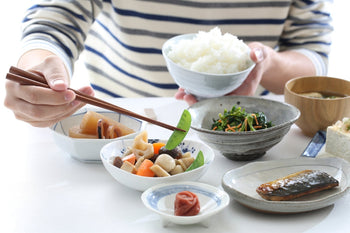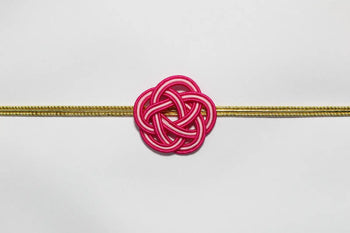

Japanese confectionery tradition is renowned for its meticulous attention to detail and the artistry that goes into every bite. Among this country's myriad treats, we have selected some of the best delights, from the oldest sweets to modern interpretations, from the cheapest options to high-end products... and so on! Join us as we explore the best pieces that define the Japanese confectionery experience.
Oldest Japanese sweets
Japan's oldest sweets, made over 1,000 years ago, are called "Seijyo Kankidan", commonly known as "Odan". It was introduced during the Nara period (710-794) from China's Tang Dynasty (618-907) together with Buddhism; it was offered during prayers and ceremonies. Sejyo Kankidan contains red bean paste, peppermint, and cinnamon due to their religious significance. It is fried with sesame oil and has an unusual purse shape.
Most expensive Japanese sweets
Since new products are being released daily, it is difficult to determine the "most expensive" ones, but we will introduce two of the most famous Japanese sweets.
" Yomogashima ” from Toraya

Inside the manju is ...... even more manju! What is Toraya's Yomoggashima via Foodie
" Manyoukan ” from Kashou Fuugetsu
It was created by a small Japanese confectionery shop in Ibaraki Prefecture to solve problems faced by local chestnut farmers and Japanese confectionery shops: back in time; farmers did not know how to decide the prices of their crops by themselves, while confectionery shops were having troubles not being able to sell their products at higher costs, despite the raw materials getting more and more expensive. To avoid getting out of business, Kashou Fuugetsu produced a special yokan (a dense, jelly-like sweet made from agar-agar and red bean paste) containing 11 luxurious chestnuts each and wrapped in an elegant yet practical way. It also costs 10,000 yen and is often bought as a gift.
Cheapest Japanese sweets
A few years ago, a particular type of manju became famous: "10 yen-manju"; as the name suggests, they only cost 10 yen each (about 0.066 USD). They consisted of small manju with a diameter of about 3.5 centimeters, and the filling was made of red bean paste. Despite the meager price, they were so delicious they quickly spread all over Japan, and various manufacturers started selling them. Although the previous boom has passed, some shops still continue to sell manju, similar to the original 10 yen-manju, although they cost slightly more than 10 yen. The brown sugar manju sold at Yanaka Fukumaru Manju has become a popular tourist destination due to its low price (110 yen for 9 pieces) and unique taste.
Most popular Japanese sweets
Most popular Japanese sweets in Japan
Many companies have researched the Japanese sweets that Japanese people like the most, and according to their statistics, the most popular ones include dango , daifuku, senbei (rice crackers), and dorayaki (pancake-like sandwiches containing red bean paste). Japanese people keep eating traditional sweets today because flavors such as red bean paste, rice, and soy sauce have been familiar to them for a long time, and therefore, they are still being sold in every store. Furthermore, in such a country where the four seasons alternate very clearly, Japanese traditional sweets are a tasteful occasion to enjoy the central motifs of that time of the year, thanks to incredible decorations featuring seasonal colors and shapes in their appearance.
Most popular Japanese sweets overseas
Japanese sweets popular among foreigners are those made with mochi, such as dango and daifuku, as they have a unique chewy texture that cannot be found in other countries. In addition, they are not excessively sweet and are fun to bake, as they often have visually enjoyable appearances. Other treats rapidly spreading worldwide include soy sauce-flavored rice crackers and matcha-flavored cakes and candies.
Sweets from Kyoto are popular souvenirs that attract both Japanese people and foreign tourists for their artistic delicacy and precision.
Most complicated Japanese sweets
" Komokaburi ” from Ishikawa Prefecture
An example of Japanese sweets that require a complicated production process is "komokaburi", a famous Kanazawa confectionery from Ishikawa Prefecture: they are a reproduction of Kanazawa's winter tradition of komokake," which consists of attaching straw mats to the earthen walls of the Nagamachi Samurai District to protect them from snow. Komokaburi are made by wrapping a large honey-pickled in red bean paste and adding a unique aromatic outer shell, creating a dish that exudes depth and nostalgia. Due to their complex shape, all manufacturing is done by hand, and skilled artisans carefully bake each piece. Komokaburi is a masterpiece that embodies the traditional sweets culture of the castle town of Kanazawa, which is enjoyable to look at and eat.

Product introduction "Komokaburi" via Itaya
" Nerikiri ”
Another famous sweet with a complicated process is "nerikiri": its main ingredients include white bean paste, sugar, yam, and brightly colored natural pigments. These sweets, often served at tea ceremonies and other celebrations, are amazing artcrafts representing seasonal plants and features. They will allow you to enjoy the four seasons with your eyes and require great skills and knowledge to be prepared.
Sweetest Japanese sweets
No. 1: " Kasdos ” from Nagasaki Prefecture
"Kasdos", a famous confectionery from Nagasaki Prefecture, is known as Japan's sweetest confectionery. It consists of a piece of castella cake (a Japanese-style sponge cake) dipped in egg yolk, mixed with boiled honey, and sprinkled with granulated sugar.
It is made only with eggs, sugar, flour, and starch syrup and has been sold from Hirado Tsutaya in Nagasaki Prefecture for over 400 years. Although each piece only weighs 26g, it contains 89 kilocalories.

Product introduction "Kasdos" via Kogetudourouho
No. 2: " Keiran somen " from Nagasaki Prefecture
The second most famous sweet is "keiran somen", also produced in Nagasaki Prefecture: it looks like ramen and consists of a mixture of egg yolk and melted rock sugar, which is squeezed into thin pieces like Montblanc. Just like kasdos, it was also brought from Portugal in the 17th century.
No. 3: " Namashoto ”
The third sweetest confectionery is "namashoto", a treat whose main ingredients are ginger and sugar. It is produced all over the country.
Most unsweet Japanese sweets
Famous salty snacks include okaki and rice crackers, but here we will introduce some unusual traditional "sweets" that are not really "sweet".
" Shio Anbin " from Ishita Confectionery
"Shio anbin" is a daifuku whose bean paste filling does not contain sugar and is seasoned with salt instead. It is a local dish from the northeastern part of Saitama Prefecture and was made this way because sugar used to be very precious in the past. It was often eaten during celebrations: back in the days when beriberi used to be very common among Japanese people, red beans were considered a special meal because of their richness in vitamin B1, a natural antidote against this disease.
“ Usukawa Manju ” from Kushimoto Gihei
Kushimoto Gihei is a long-established Japanese confectionery shop founded in 1891. At that time, the sweetness was considered the criterion for the deliciousness of manju; the unsweetened manju from Kushimoto Gihei, consisting of an unsweetened red bean paste filling wrapped in a thin white external layer, was a true revolution for the wagashi market.

Product introduction "Usukawa Manju" via Kushimotogihei
Most non-Japanese looking Japanese sweets
In recent years, Japanese sweets have evolved a lot, and while there are artisans who make traditional wagashi, there are also many treats that seek new flavors and arrangements. Also known as "neo-Japanese sweets" or "evolutionary Japanese sweets", they contain Western-style ingredients and fruits, which make them look more glamorous.
Let's take a look at some of these innovative treats.
“ Sora no Mukou ” from Noshiume Honpo, Satouya
"Sora no mukou", which means "beyond the sky", is an agar-agar-based refreshing sweet; the half-transparent gradation of blue and purple colors gives it a space-like appearance. For this reason, it has become a hot topic for being Instagram-worthy.

Noshiume honpo satouya "Soranomukou" via JTB shopping
“ Fly-me-to-the-Moon Yokan Fantasia ” from Nagatoya
This wagashi shop utilizes traditional confectionery techniques while pursuing new ways to enjoy and taste their unique treats. "Fly-me-to-the-Moon Yokan Fantasia", whose name comes from a jazz number, has the particularity of changing its appearance each time it is cut into pieces. Champagne, walnuts, and dried fruits are parts of the filling together with agar-agar, and the packaging has a pop-like appearance similar to Western sweets.
Rarest Japanese sweets
In Japan, some sweets can be eaten only at certain times of the year, depending on events and seasons: let's take a look at some of these time-limited specialties.
“ Hanamochi ” from Shizuoka Prefecture
Hanamochi is only sold during the festivals of Wakamiya Hachimangu Shrine and Tateishi Shrine in Shizuoka Prefecture. This confectionery is mainly made of red bean paste wrapped in rice flour and topped with red and green colors on the surface. The red color represents evil spirits while the green color represents vitality, and eating this treat is said to bring good health and safety.

What is Hana Mochi, a fantastic sweet that can only be eaten twice a year? via Fujieda Toukaido Machiaruki
“ Gyōjamochi ” from Kashiwaya Mitsuda
This sweet is made with white miso and is only sold once a year during Kyoto's Gion Festival. In 1806, an epidemic broke out in Kyoto; it is said that the Kashikawa manufacturer saw the recipe of gyōjamochi in a dream, and when he cooked it and offered it to gods and local people, the plague ended. Since then, they have been handed down as simple treats and an important part of Japanese culture.
Best Japanese sweets
Wagashi are still very familiar to Japanese people: you can buy them everywhere, they usually do not cost that much and are enjoyable not only as tasteful bites but also for their unique, delicate appearance.
Among the many Japanese sweets, one of the most appreciated treats is certainly daifuku: there is a wide variety, starting from affordable options, costing around 100 yen (0.66 USD), to high-end products that are sold primarily on department stores. Time-limited specialties made with various seasonal fruits have recently become mainstream, and "strawberry daifuku" is undoubtedly the most popular version. Although it can be found regardless of the period of the year, it has become a Winter seasonal item: its filling consists of red bean paste wrapped around a sweet and large strawberry and is loved by people of all ages.
Sensing the seasons and eating seasonal foods is extremely important for Japanese people. We believe that wagashi, which represents many natural motifs and shows artisans' incredible skills, embody the unique delicacy and richness of Japanese culture.
Although it is a simple treat consisting of red bean paste wrapped in mochi, daifuku perfectly incarnates everything Japanese sweets offer. Nowadays, we can also find foreign-inspired variations where custard cream and chocolate are used instead of bean paste, making them more familiar to many people. We hope that daifuku and other wagashi will continue to be loved worldwide!




